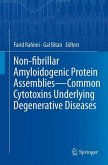Adhesion plays a major role in the bacterial lifestyle. Bacteria can adhere to organic and inorganic surfaces, to each other, and of course to host cells during pathogenesis.
The focus of this book is: how are such adhesion phenomena best studied? Microbial genetics experiments have greatly enhanced our knowledge of what bacterial factors are involved in adhesion. For numerous reasons, though, biochemical and structural biology knowledge of the molecular interactions involved in adhesion are limited. One major problem has been a lack of interdisciplinary research and understanding in the field. On the one hand, the microbiologists lack detailed knowledge of the biophysical possibilities and have limited access to the frequently expensive instrumentation involved while on the other hand, the experts in these methods frequently do not have access to the biological materials, nor do they necessarily understand the biological questions to be answered. The purpose of this book is thus to overcome this gap in communication between researchers in biology, chemistry and physics and to display the many ways and means to investigate bacterial adhesion. We hope to stimulate new and ground-breaking research.
The focus of this book is: how are such adhesion phenomena best studied? Microbial genetics experiments have greatly enhanced our knowledge of what bacterial factors are involved in adhesion. For numerous reasons, though, biochemical and structural biology knowledge of the molecular interactions involved in adhesion are limited. One major problem has been a lack of interdisciplinary research and understanding in the field. On the one hand, the microbiologists lack detailed knowledge of the biophysical possibilities and have limited access to the frequently expensive instrumentation involved while on the other hand, the experts in these methods frequently do not have access to the biological materials, nor do they necessarily understand the biological questions to be answered. The purpose of this book is thus to overcome this gap in communication between researchers in biology, chemistry and physics and to display the many ways and means to investigate bacterial adhesion. We hope to stimulate new and ground-breaking research.








